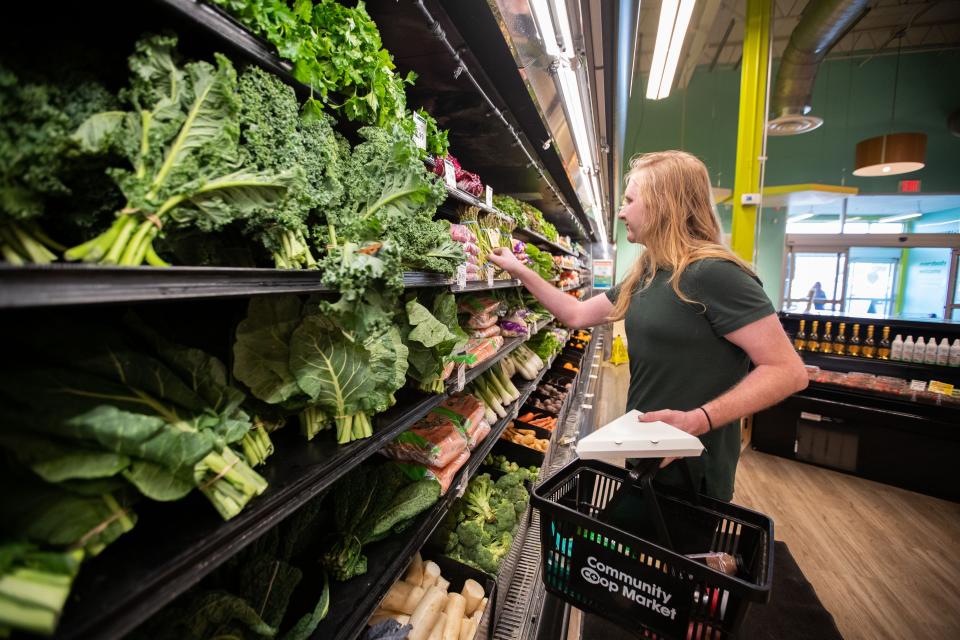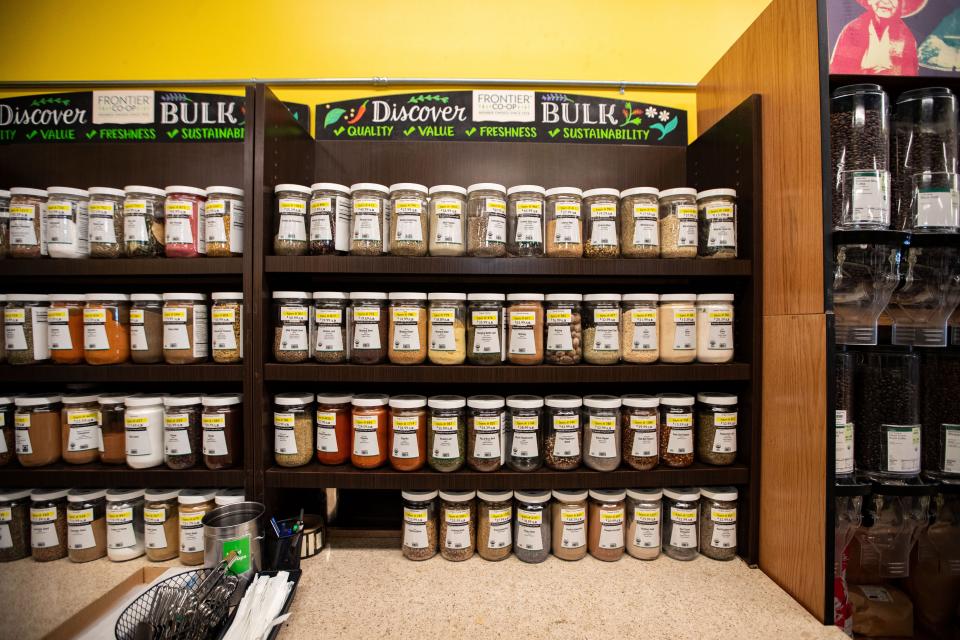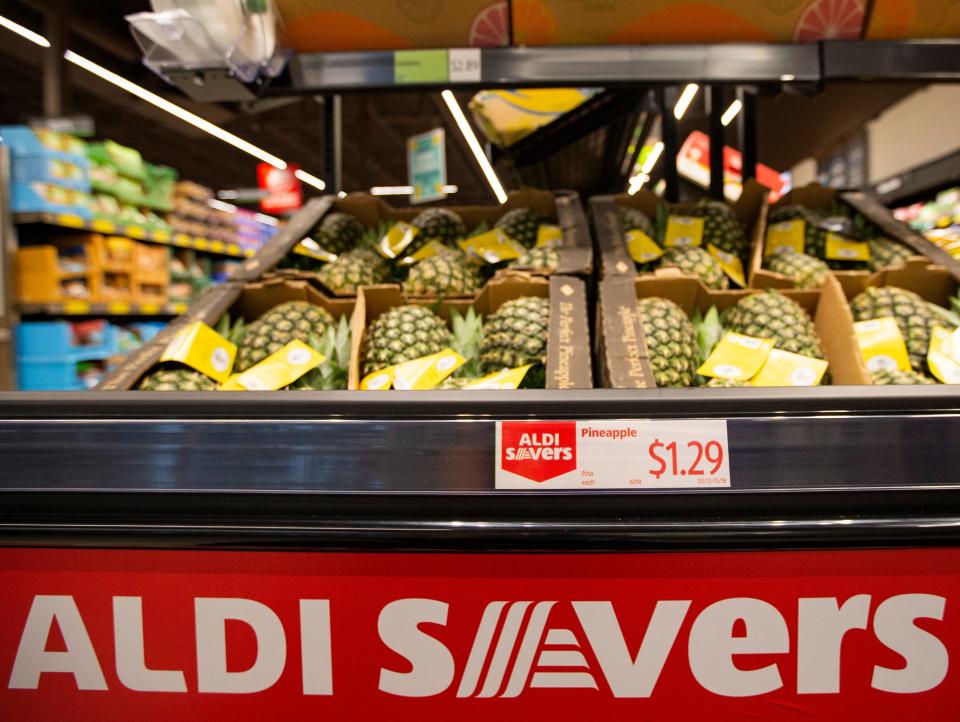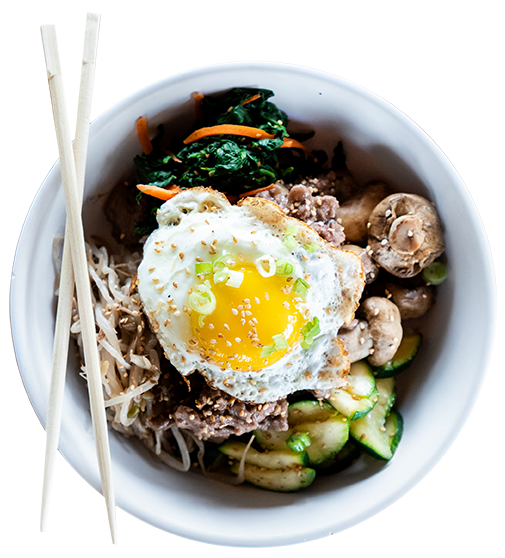Dietitians say it's healthy to forget these 7 myths about food | Mark Mahoney
With the month of February more than half over, are you still sticking to a healthy eating plan?
National Nutrition Month is coming up in March, so it's a good time to take a look at some basic information on seven common nutrition myths that should receive some clarification.
The explanations to counter these myths come from a group of eight Registered Dietitians/Nutritionists and additional references to support their input are utilized.
Myth #1: Only shop the perimeter of the grocery store

The perimeter of a grocery store is often praised for offering fresh produce, meat, seafood, dairy and fortified non-dairy products, while some suggest avoiding the middle aisles because of processed and prepackaged foods on those shelves.
Dietitian Lauren Harris-Pincus notes, “The center aisles contain a treasure trove of nutrient-dense and cultural foods including frozen fruit, veggies and seafood, canned beans, fruit and vegetables, as well as dried beans, whole grains, nuts, seeds and spices.”
Only 1 in 10 Americans consumes the recommended amount of fruits and vegetables, and 95% do not meet the recommended amount of daily fiber.
To better meet nutrition needs and have a well-balanced diet, Harris-Pincus encourages shopping in all areas of the supermarket that stock high-quality whole foods in any form.

Myth #2: Low calorie and low fat means healthier
According to, Alyssa Pacheco, “Opting for the lowest calorie options possible will usually leave you feeling hungry and unsatisfied, causing you to eventually overeat.
Catherine Karnatz cautions that many low-fat and fat-free products, like yogurt or salad dressing, will often contain a lot of added sugar to try to make up for the flavor that’s lost from reducing or removing the fat content.
Instead of focusing on low-calorie and low-fat foods, experts urge eating enough calories and fat to support health and stay satisfied. The 2020-2025 Dietary Guidelines for Americans (DGA) recommends 20 to 35% of daily calories come from fat, with less than 10% from saturated fat.

Myth #3: Natural sugars are healthier than table sugar
“At the end of the day, your body digests and views all of these foods as sugar,” says, Alyssa Pacheco. What matters is that excessive sugar of any kind can lead to increased risks for diabetes, cardiovascular disease, cancer, metabolic disorders, depression and cognitive impairment.
Pacheco says that rather than stressing about which type of sugar a person chooses, select whichever one they prefer and enjoy it in moderation. The American Heart Association advises keeping added sugar to a maximum of 6 teaspoons for women and 9 teaspoons for men per day.
Myth #4: Sea salt is healthier than table salt
Just like for sugars, sea salt and Himalayan salt are ultimately salt, and contain about 40% sodium, similar to table salt.
Sea salt is minimally processed and may contain trace amounts of minerals like magnesium, calcium and potassium, while table salt is more processed to remove impurities, and typically fortified with iodine for thyroid health. With a well-balanced diet, there’s no need to seek out minerals from sea salt.
Americans already consume over 150% of the maximum guidelines for sodium. “Excessive sodium consumption is linked to high blood pressure and other health issues.
Rauch suggests using any salt sparingly to maintain a healthy diet. The DGA recommends capping salt intake at no more than 2,300 mg, but ideally, they suggest closer to 1,500 mg or less per day.
Myth #5: Eggs are bad for you and raise your cholesterol

For years, reports steered people away from eggs because of their high dietary cholesterol. However, consuming six to 12 eggs a week with a heart-healthy eating plan is generally considered safe.
The 2015-2020 Dietary Guidelines eliminated the daily upper limit of 300 mg of dietary cholesterol per day as more research started showing that saturated fat, not dietary cholesterol, may increase risk of heart disease.
According to Umo Collins, “They [eggs] can be part of a healthy diet and support muscle maintenance, overall well-being, help meet your daily protein needs and are a versatile protein source that can be added to many different meals.”
Myth #6: Don’t eat after 6 p.m. or 7 p.m. (or when the sun has set)
Your body doesn’t have an internal clock that yells to your cells notes Katie Schimmelpfenning. “Its 6 p.m., time to store this food for weight gain! Energy is energy no matter when it is consumed.”
Many studies also show that it’s not necessarily eating late that leads to weight gain, but rather eating larger amounts of food in the evening. Eating earlier in the day may help manage hunger later on and prevent overeating.
Rhyan Geiger recommends taking a closer look at our overall food habits, and working on those instead of creating an arbitrary cut-off time. “It all comes down to the types of foods you choose,” Geiger says. “Opting for fresh fruits, veggies or whole grains is much different than opting for cookies, candies and sweets.”
However, if eating close to bedtime affects digestion, reflux or sleep, consider having that last meal or snack two to three hours before lying down.
Myth #7: Coffee is a meal
Many people can’t start the day without a cup of coffee. But it is by no means a replacement for breakfast or any meal. A cup of brewed black coffee may be antioxidant-rich, but it only has about 5 calories and no protein, fat or carbohydrates.
“While [some] coffee includes protein and fats from milk, it will not leave you full and energized the same way a conventional breakfast does,” says Patricia Kolesa. She suggests in addition to coffee, include quick options like peanut butter on frozen waffles, Greek yogurt with fruit or hard-boiled eggs on avocado toast to start the morning off right.
Thanks to Yahoo life for requesting collective input from a group of dietitians on seven myths which they wanted to clarify for the public. Recommendation and explanations are solely their own and are based on research and references cited by these individuals.

Mark A. Mahoney, Ph.D. has been a Registered Dietitian/Nutritionist for over 30 years and completed graduate studies in Nutrition & Public Health at Columbia University. He can be reached at marqos69@hotmail.com.
This article originally appeared on Tallahassee Democrat: Dietitians debunk 7 common myths about food, diet, nutrition

